Adult Night At The Aquarium Is A Lot Of Fun (3/16/2009)
Every few months, the aquarium management has an "adult night" meaning we can come and see the aquarium without kids! Yeah!
This time it was "behind the scenes" so we go to see parts of the aquarium most people do NOT get to see! The behind the scenes tour provides a sneak peak into the daily operations of the Aquarium of the Pacific. Guests will enter the “wet side” of the aquarium, a section not normally open to the public. See what it takes to maintain a world class aquarium, from water filtration to animal care and feeding. Tour guests will have the opportunity to view our largest exhibit, the Tropical Reef habitat from above and even feed some of our fish. Learn interesting facts about the Aquarium of the Pacific such as the aquarium has enough concrete in it to build a 73 mile long sidewalk! Come join us on a fun filled tour!
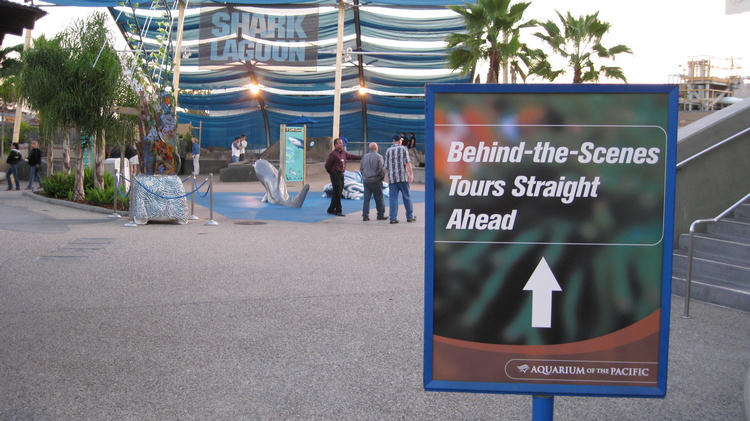
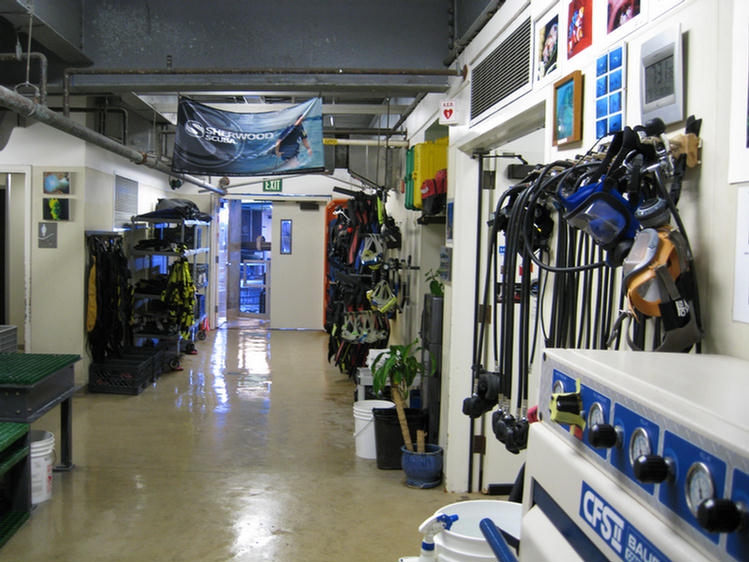
The divers hangout!
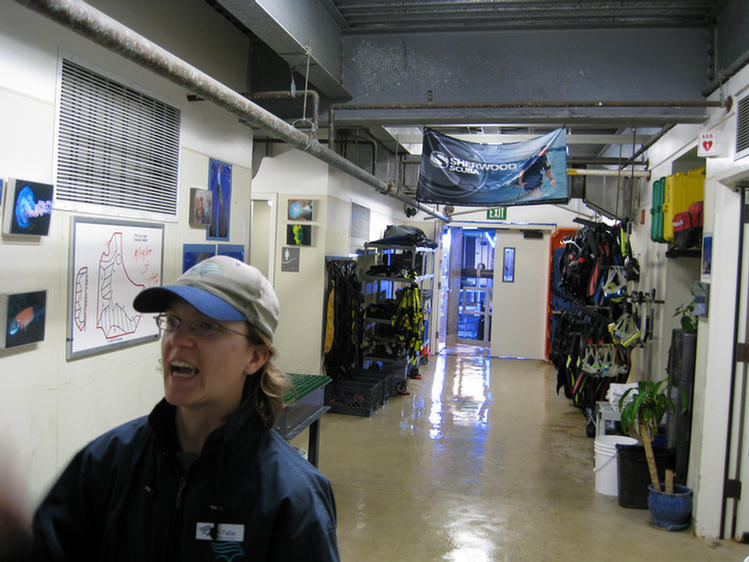
Our guide was absolutely super!
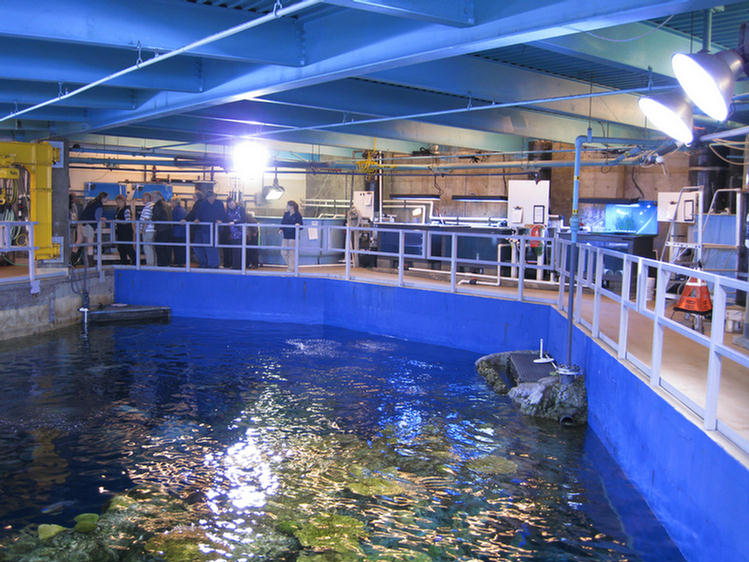
The 375,000 gallon tank was amazing to see from the top
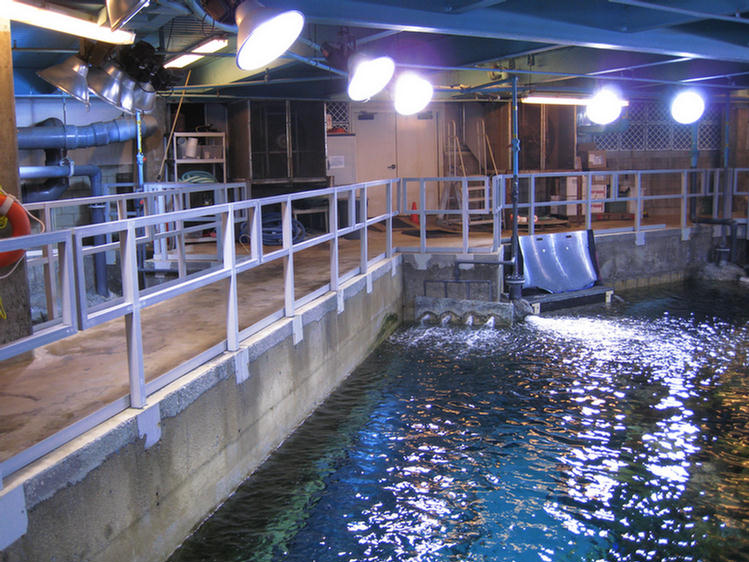
This tank can be seen from five different vantage points

Amazing how much work goes on behind the sceens
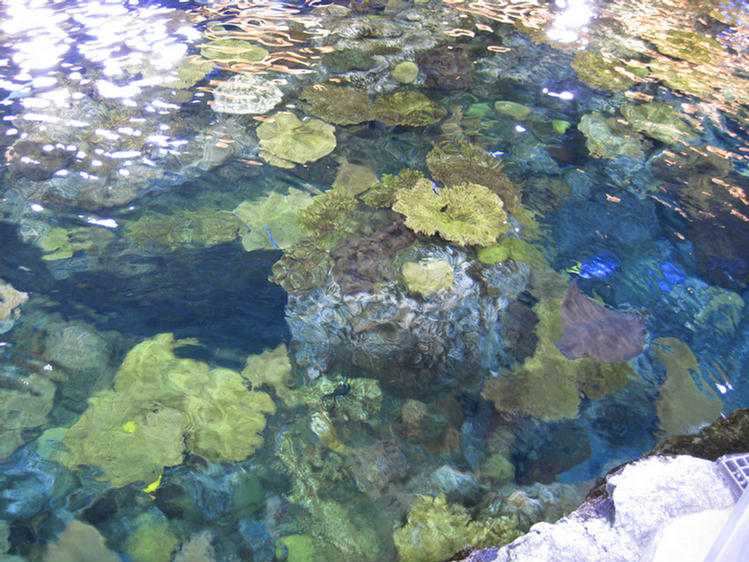
The top down view is much different than the view form the displays
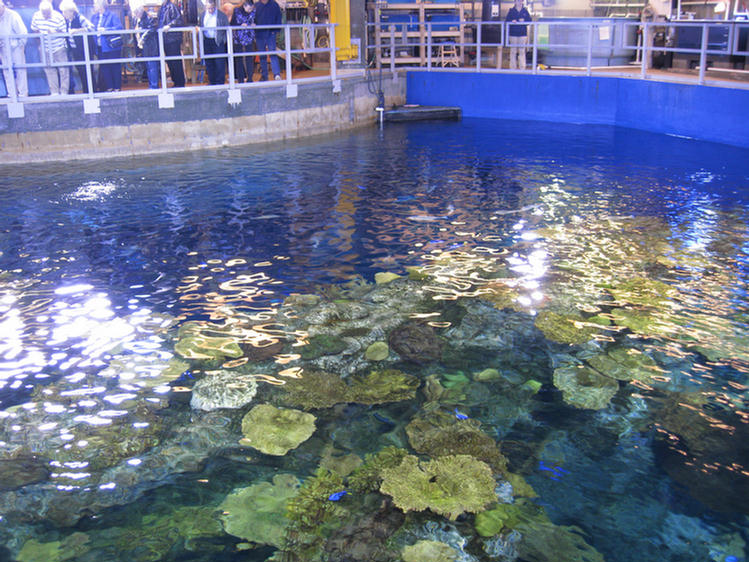
Amazing views from the top... The bright lights were interesting!
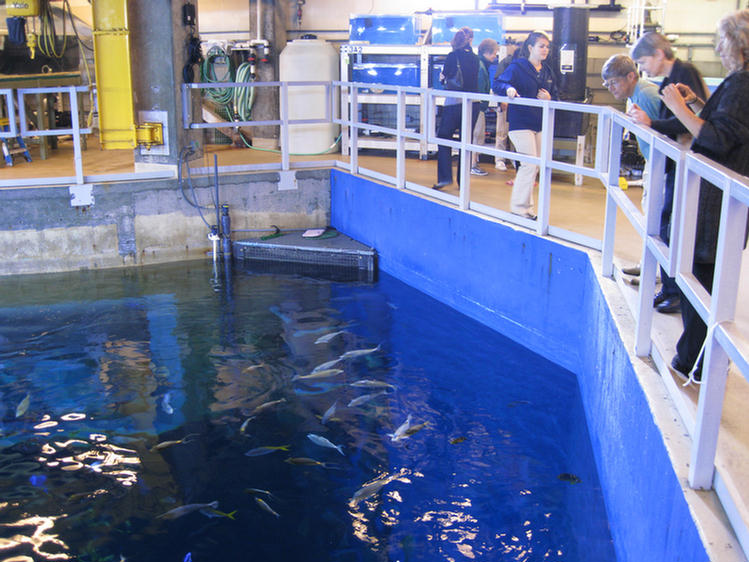
Sue was taking copius notes!
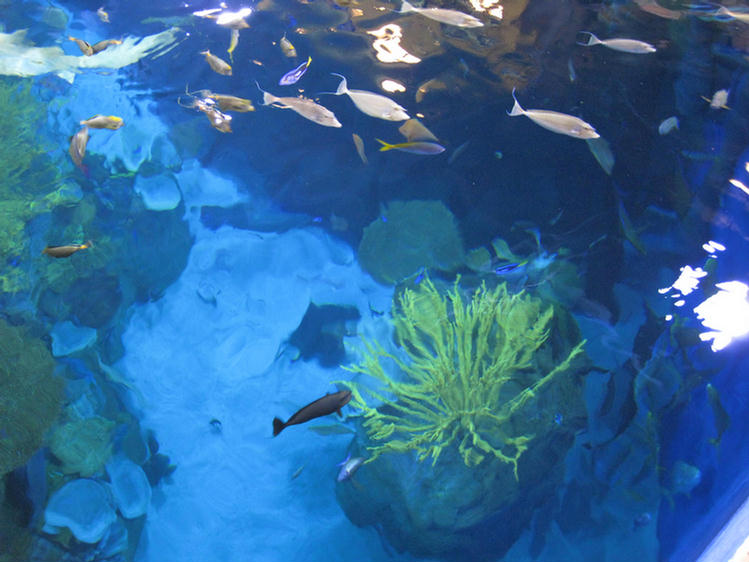
Fsih everywhere form the top down vantage point
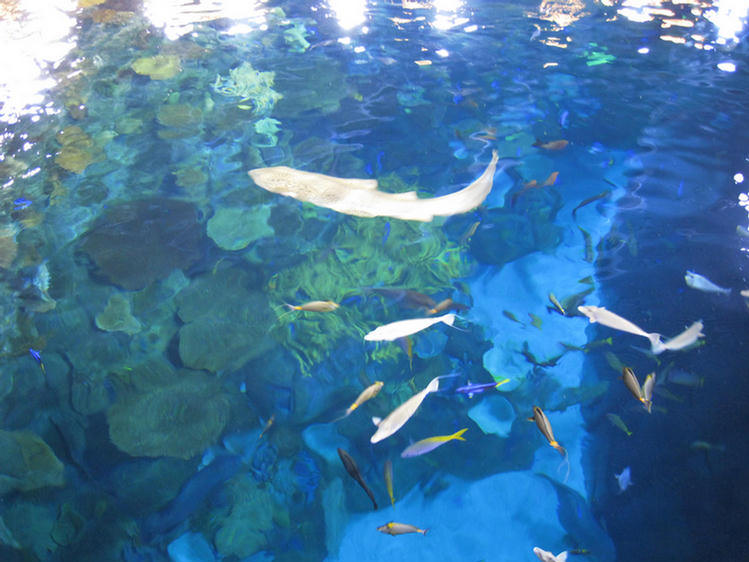
The water was so very very clear
Did You Know? - An aquarium (plural aquariums or aquaria) is a vivarium consisting of at least one transparent side in which water-dwelling plants or animals are kept. Fishkeepers use aquaria to keep fish, invertebrates, amphibians, marine mammals, turtles, and aquatic plants. The term combines the Latin root aqua, meaning water, with the suffix -arium, meaning "a place for relating to"
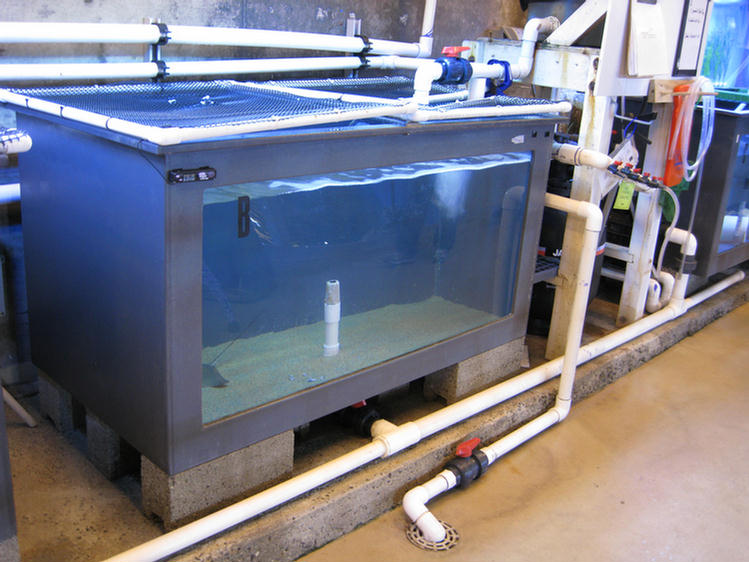
They kept many fish in small tanks so they could be
transferred to the large tank when they were ready

Sue loves to see the snake eggs
Did You Know? - There are three ways in which shark pups are born, depending on the species. These gus use the Oviparity method. They lay eggs. In most of these species, the developing embryo is protected by an egg case with the consistency of leather. Sometimes these cases are corkscrewed into crevices for protection. The mermaid's purse, found washed-up on beaches, is an empty egg case. Oviparous sharks include the horn shark, catshark, Port Jackson shark, and swellshark.
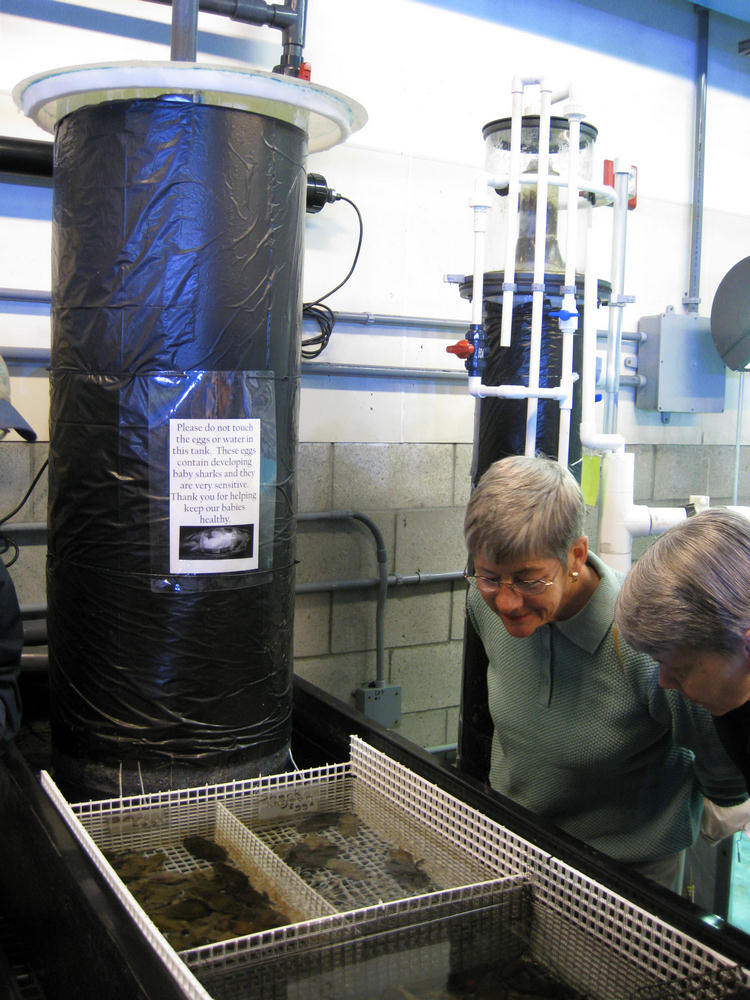
Amazing to watch them grow and they are in the flow of the tank to get adjusted before they are born
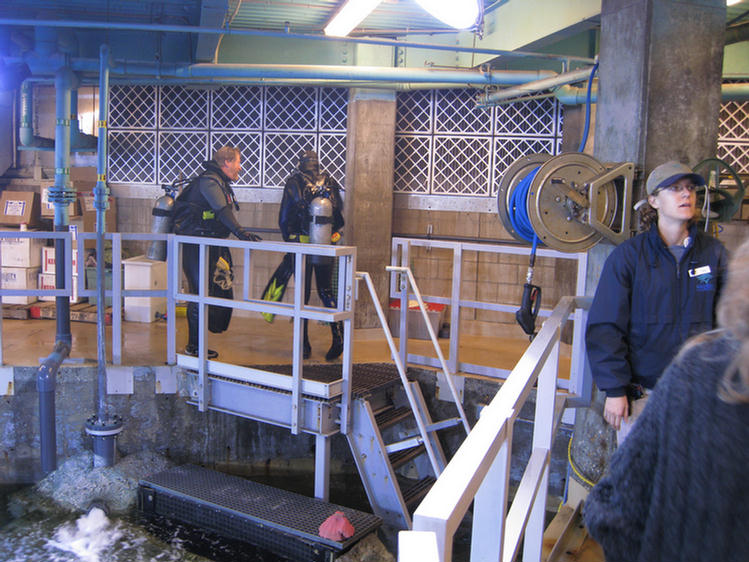
The divers count their fingers when they exit the tanks
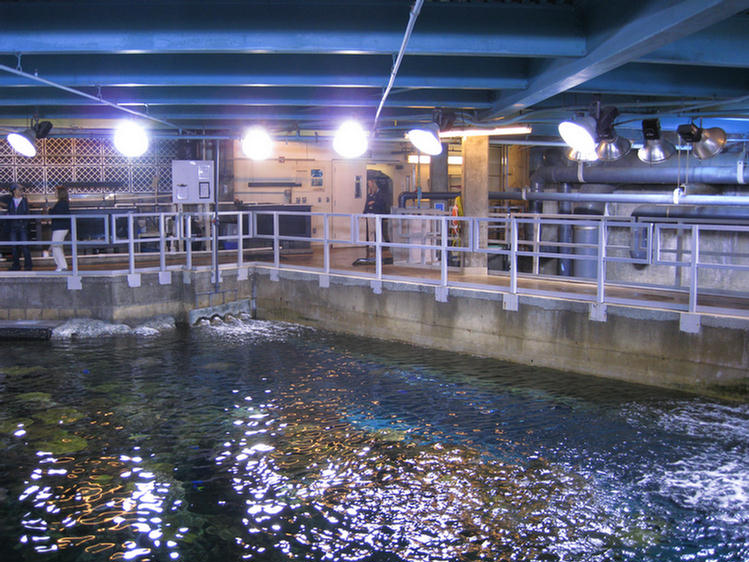

1.5 millions gallons and hour are filtered at this locaiton
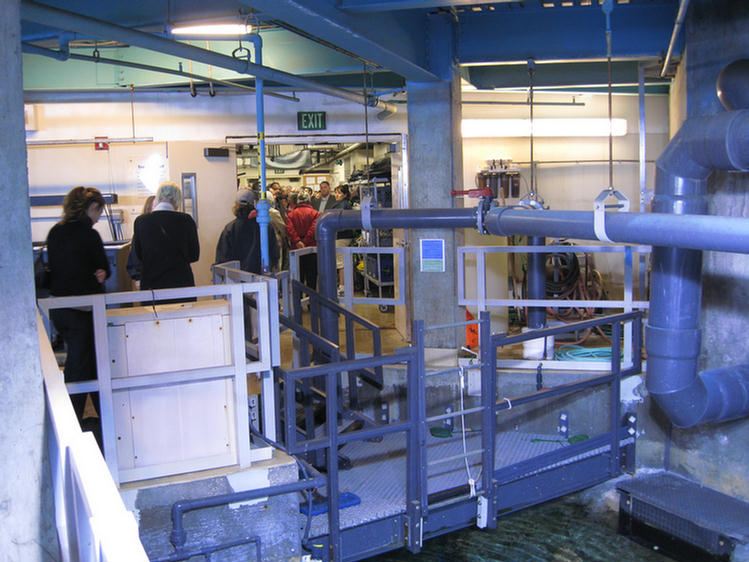

Machinery all over the place

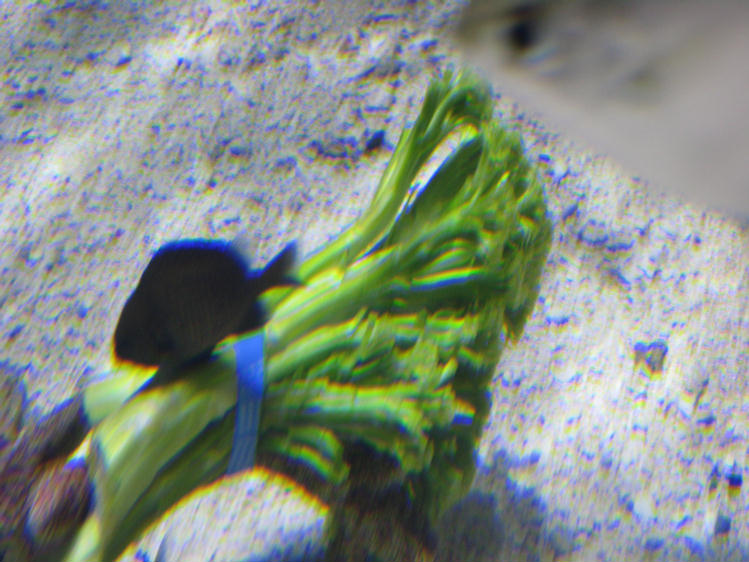
Easy to deef these guys... Just drop celery into the tank!
Did You Know? -
The Blue Whale (Balaenoptera musculus) is a marine mammal belonging to the suborder of baleen whales (called Mysticeti). At up to 32.9 metres (108 feet) in length and 172 metric tonnes (190 short tons) or more in weight, it is the largest whale and the largest living animal and is believed to be the largest animal ever to have existed.
Long and slender, the Blue Whale's body can be various shades of bluish-grey dorsally and somewhat lighter underneath. There are at least three distinct subspecies: B. m. musculus of the north Atlantic and north Pacific, B. m. intermedia, of the Southern Ocean and B. m. brevicauda (also known as the Pygmy Blue Whale) found in the Indian Ocean and South Pacific Ocean. B. m. indica, found in the Indian Ocean, may be another subspecies. As with other baleen whales, its diet consists almost exclusively of small crustaceans known as krill.
Blue Whales were abundant in nearly all the oceans until the beginning of the twentieth century. For over 40 years they were hunted almost to extinction by whalers until protected by the international community in 1966. A 2002 report estimated there were 5,000 to 12,000 Blue Whales worldwide[8] located in at least five groups. More recent research into the Pygmy subspecies suggests this may be an underestimate. Before whaling the largest population was in the Antarctic, numbering approximately 239,000 (range 202,000 to 311,000). There remain only much smaller (around 2,000) concentrations in each of the North-East Pacific, Antarctic, and Indian Ocean groups. There are two more groups in the North Atlantic and at least two in the Southern Hemisphere.
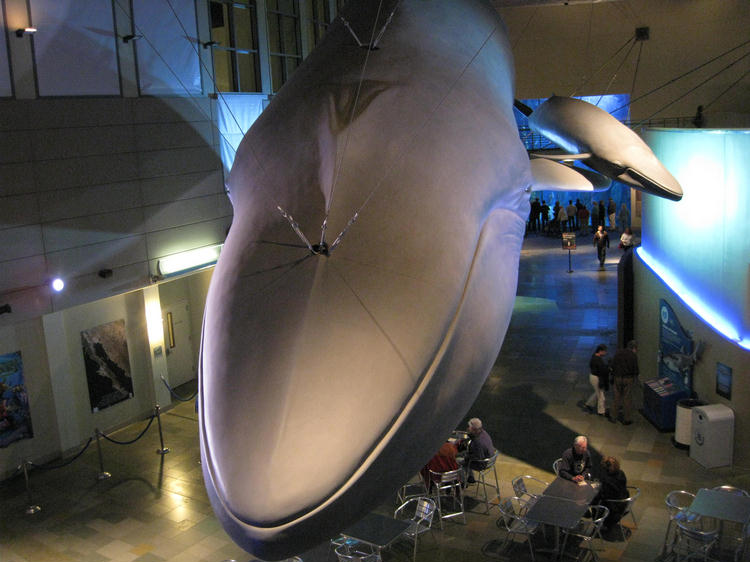
The blue whale

It was a super evening visiting the fish! No kids made it even better... We could stop and read and watch without getting killed by flying children.